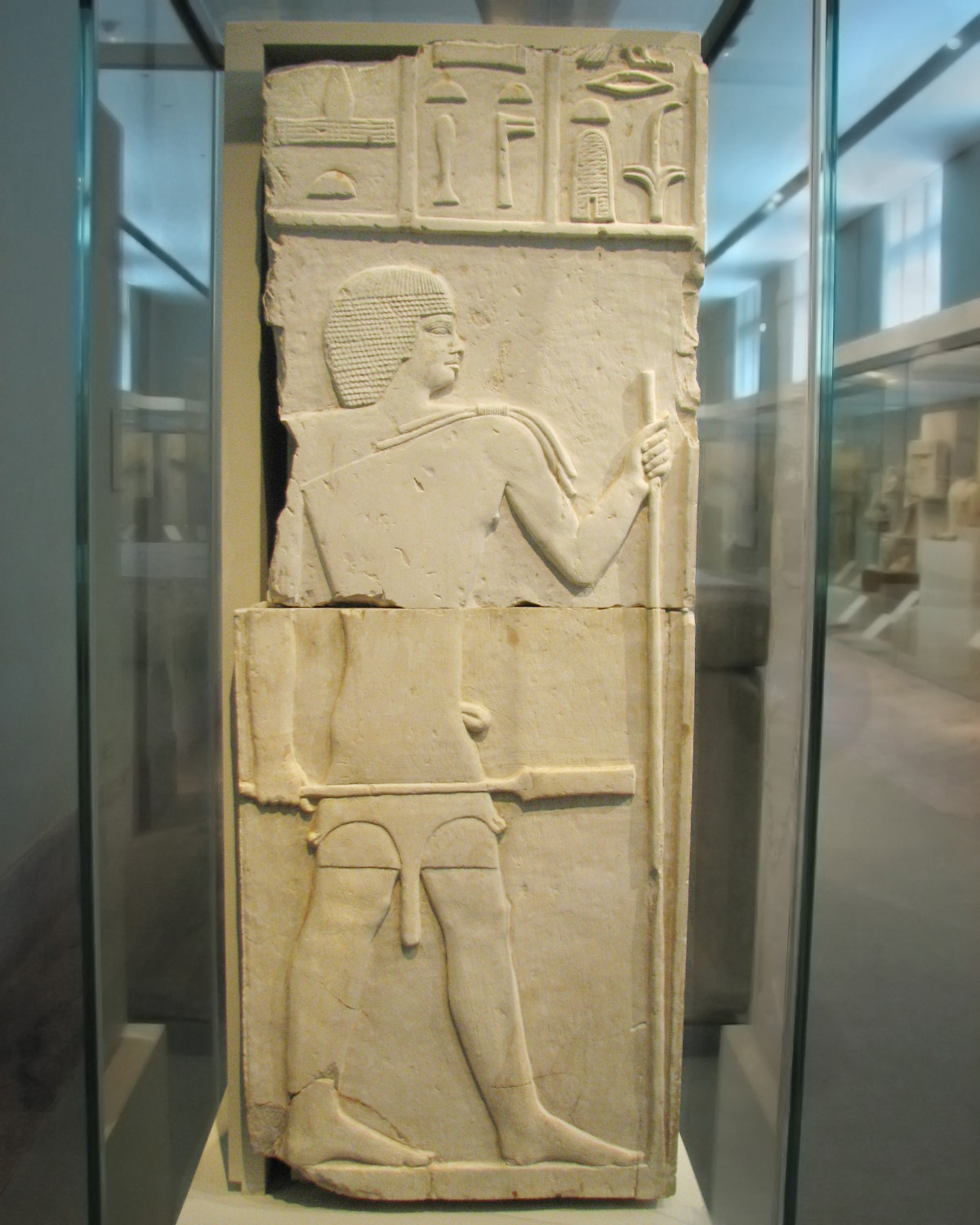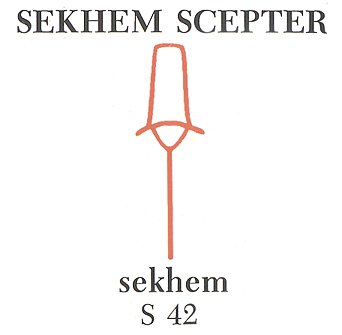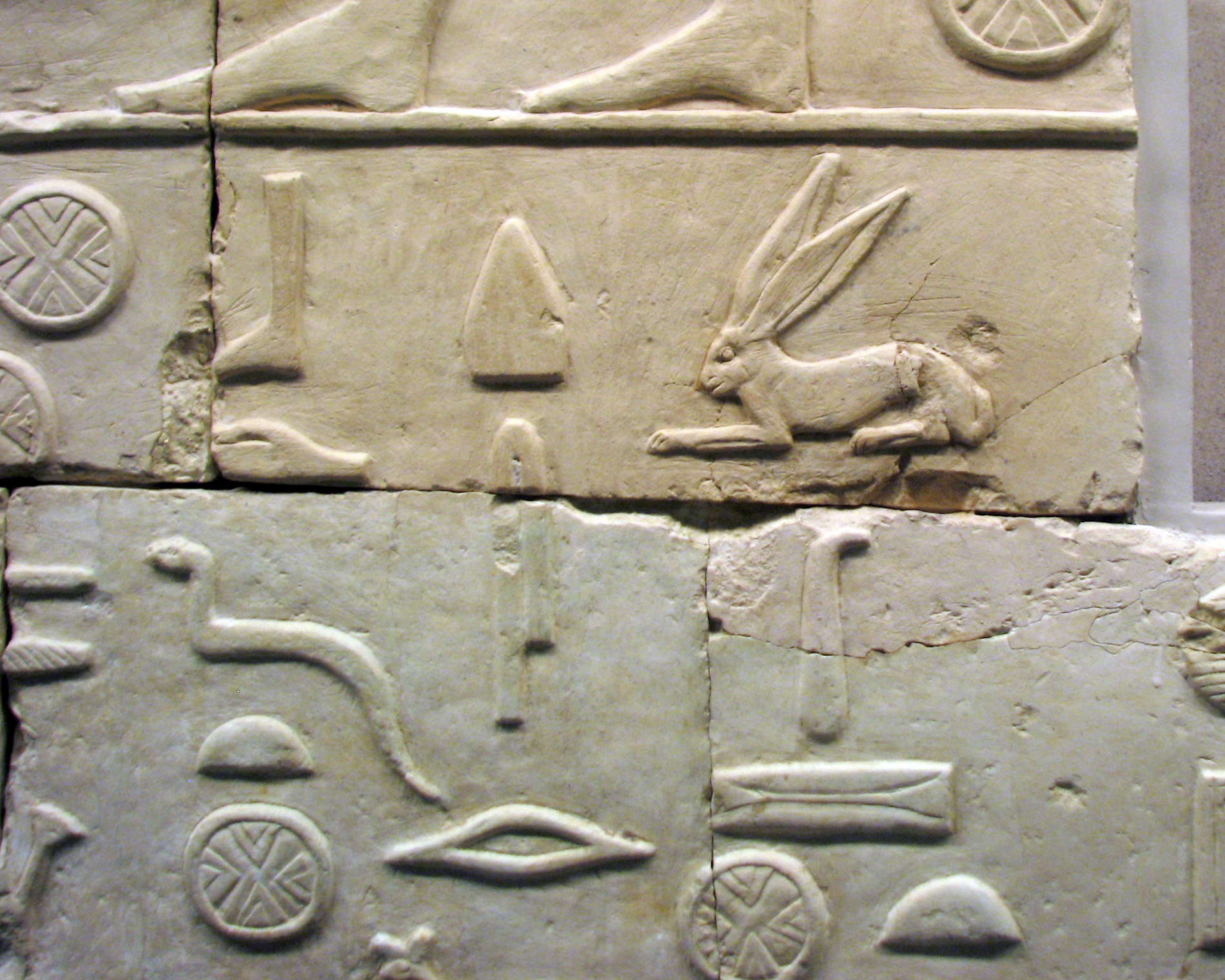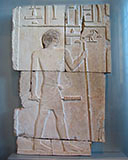
Akhtihotep Reliefs
Egyptian, Early Dynasty 4, (ca. 2575-2551 BCE)
From Saqqara, Limestone
Funds from various donors, 1958 (58.123)

Akhtihotep Reliefs
Egyptian, Early Dynasty 4, (ca. 2575-2551 BCE)
From Saqqara, Limestone
Funds from various donors, 1958 (58.123)
|
(From info card) "These relief blocks forming a corner show Akhtihotep twice; on the left, he wears a panther-skin garment, the tail of which hangs down between his legs, and on the right, he wears a standard kilt. Placed to form one side and the front, respectively, of the frame of a double recessed false door, the reliefs were so arranged that Akhtihotep appeared both emerging from the false-door niche (left) and entering it (right)." Notice the scepter Akhtihotep has, it is the same scepter Merti carries:

From the Third Dynasty on, the sekhem appears in the royal names of kings, and later in the titles of queens and princesses also. But from thea earliest times the sekhem was also delegated, as a baton of office, to viziers and others of important rank. Such persons are often shown bearing the scepter in the fulfillment of their duties." (Illustration and quote from _Reading Egyptian Art_, by Richard H. Wilkinson, pages 182-183) |



See, too, the Ahkethotep relief at the Brooklyn museum